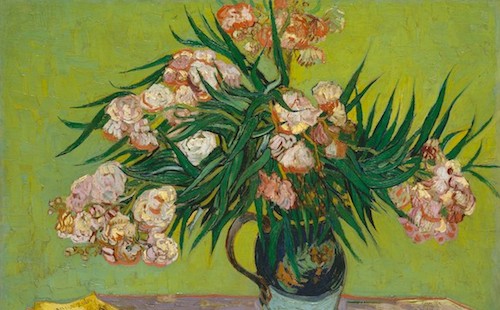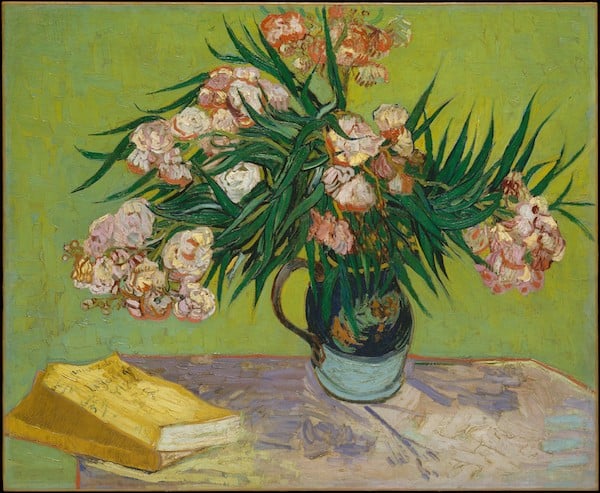Art & Exhibitions
Around the Art World in Six Minutes
From Malawi to the Met, all the art world news you need to start your week.

From Malawi to the Met, all the art world news you need to start your week.


Rock painting at Mphunzi in Malawi’s Chongoni Rock Art Area.
Via Wikimedia Commons.
The Profile: Meet 31-year-old Moses Mkumpha, the only conservation official in Malawi, who is returning to his native country in June after a nine-month fellowship at the New York University Institute of Fine Arts’s Conservation Center—and is the subject of a terrific article by Lee Adair Lawrence on Al Jazeera America. “I am excited because what I have learned is enough to do some good work,” Mkumpha says. “But there is more I need to learn to do my job better.” That job includes ensuring the safekeeping of everything from dinosaur bones, masks, and baskets, to the ancient animal paintings in the Chongoni Rock-Art Area (pictured above).
The Interview: Françoise Gilot, the nonagenarian artist and onetime companion and muse of Pablo Picasso, spoke to the Financial Times on the occasion of her solo show of recent drawings up now at New York’s Elkon Gallery. The two met in Paris in 1943, when Picasso was 62 and Gilot was 21, and were together for 10 years before she broke up with him. An anecdote about her plan to visit Pierre Bonnard’s studio helps to illustrate Gilot’s difficult relationship with Picasso. “It provoked a great argument between us,” she says. “Pablo said he hated Bonnard—hated him!—and did not want me to visit. I replied that I could, of course, do what I liked without his permission: but the argument was heated and I did, in the end, decline to go.”
The Behind-the-Scenes Feature: How do you stop the spread of looted antiquities to museums, dealers, collectors, and auction houses around the world? For Egypt, which has managed to recover many of the artifacts stolen from its museums during the 2011 uprising but is now ravaged by illegal digs and excavations, it involves a combination of high- and low-tech strategies, as the Washington Post reveals. The methods range from old-fashioned lobbying—the country’s minister of state for antiquities, Mohamed Ibrahim Ali, recently met with members of Barack Obama’s administration to plead for the addition of Egypt to a group of countries where the US Immigration and Customs Enforcement can seize artifacts that don’t have proper documentation—to cutting edge. “It was really hard before this technology to get a full sense of site damage from looting all over the world,” says University of Alabama at Birmingham archaeologist Sarah Parcak, who uses satellite imagery to monitor suspect excavation pits from space.

Vincent van Gogh, Oleanders (1888).
Courtesy the Metropolitan Museum of Art, New York.
The Eye Candy: The Metropolitan Museum has made digital images of more than 400,000 objects from its permanent collection available to download for non-commercial use, including in scholarly publications. The new initiative, dubbed Open Access for Scholarly Content (and indicated by the acronym OASC in the online collection entry for each object covered by the program), will continue to grow as more digital entries with downloadable, high-resolution images are created. Many of the Met’s choice holdings are already covered by the OASC program, including all works by Rembrandt, Paul Gauguin, and Vincent van Gogh—like the latter’s Oleanders (1888, pictured above).
The Opinion Piece: Art historian Amanda Vickery’s BBC series “The Story of Women and Art” has her seeking out works by women artists in public museums and galleries in Europe and the UK but, as she writes in the Guardian, her search has been largely (though, sadly, not surprisingly) unsuccessful. “Public galleries seem tacitly to endorse the conservative view, exemplified by Brian Sewell’s assertion that ‘only men are capable of aesthetic greatness,'” Vickery writes. “But painters and sculptors were artisans working within family-based workshops, just like tailors, locksmiths, goldsmiths and cabinetmakers. Art was a trade. Few paintings were the product of a single hand—only the face and hands might be the work of the ‘master.’ The male artist’s brand was a fiction.”

Still from Closed Mondays (1974), directed by Bob Gardiner and Will Vinton.
Via YouTube.
The Video: In this fascinating profile of Will Vinton, who coined the term “claymation” and revolutionized the animation sub-genre, Priceonomics includes the Oscar-winning short film he made with Bob Gardiner in 1974, Closed Mondays (pictured above), which chronicles a drunkard’s visit to an art museum on a day when it is closed to the public. The incredibly trippy short is made up of some 11,520 individual shots.
The WTF: As artnet News noted on May 16, Florentijn Hofman‘s globetrotting inflatable sculpture Rubber Duck has landed in Norfolk, Virginia. The attraction’s imminent arrival prompted Virginian-Pilot writer Teresa Annas to pen a lengthy analysis of the giant, floating waterfowl sculpture likening it to works by a number of modern and contemporary art’s biggest names, from Duchamp and Magritte to Jeff Koons and Mike Kelley. Annas consults with Washington & Lee University art history professor Elliott King, who seems conflicted about canonizing the quacking colossus. “To be honest,” King says, “I might have seen it floating along the waterfront and thought, ‘I wonder what that is.’ ”
The Extra-Curricular: Can you guess which company files the most copyright infringement lawsuits in the US? A record company? A photo agency? A movie studio? As the New Yorker reveals, it’s adult film website X-art.com, which in the past year alone has filed a mind-boggling 1,300 copyright infringement lawsuits against people the company suspects of stealing its videos—or about four per day—which accounts for roughly one third of all such cases in the US. In addition to their income from subscribers to the site, X-art.com co-founders Pelissier and Brigham Field earn money through the prolific legal pursuits, offering a successful model for companies looking to curtain unauthorized sharing of their content.